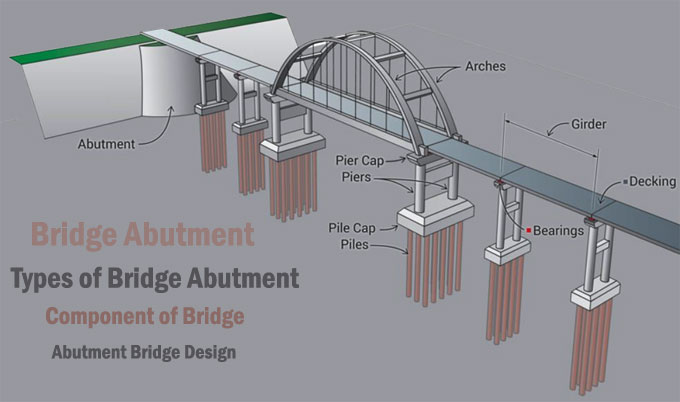
Bridge Abutment: the modern engineering of creating a sustainable and longevity Bridge
The Important Aspect of a Bridge
In modern civil engineering, building a bridge is a part of the job. Abutment is an important function of a bridge which vertically supports the structure of the bridge to carry the weight of the bridge.
The bridge span is associated with embankments of Abutments. These are vertically positioned within the water or obstacle on a broad and strong foundation which helps the abutments withstand the pressure exerted by water flow and soil due to their heavyweight.
Bridge Abutment Uses
- IT transfers the load of components of a bridge.
- It resists the self-weight lateral loads and wind loads.
- An approach slab supported one edge by it.
- It checks a balance between the vertical and horizontal force elements of an arch bridge.
Abutment Bridges are established on the ground surface. They adjoin the deck also the ground of the bridge. The bridge deck load is supported by it.
There are ten types of Bridge Abutment as follows:
(A) Cantilever Wall Abutment
(B) Stub Abutment
(C) Semi-stub Abutment
(D) MSE System
(E) U-shaped Gravity Abutment
(F) Counter fort Abutment
(G) Gravity Abutment
(H) Pile Bent Abutment
(I) Full Height Abutment
(J) Spill-Through Abutment
Cantilever Wall Abutment
There are two purposes of a cantilever wall abutment, first is soil retention behind the edges of the bridge, second is supporting the bridge superstructures .Retaining wall is one of the most popular types of abutment structures.
Stub Abutment
These abutments established at the top of fill embankments to make it feasible. Stub abutments usually use to retain soil which is slightly thicker than the thickness of superstructure. Stub abutments can be extremely cheap.
Semi-stub Abutment
The height of the semi-stub abutment is lie between the heights of full-height and stub-abutment. IT is built on the top or nearby the top of the embankment unlike stub abutment.
These types of abutments are built in between the top and bottom of the embankments. They are larger than the stub abutments and smaller than the full-height abutment.
MSE System
Mechanically Stabilized Earth is known for conventional concrete abutments which are dramatically reasonable in place of concrete abutments on piles. MSE real abutments are better cost-effective than piles under the bridge seat.
U-shaped Gravity Abutment
A U-shaped abutment has a set of piles to keep the distance between the widths of the bridges. These kinds of abutments are constructed with cement. This bridge abutment type has wings perpendicular to perform as counter-forts. The wing walls of an abutment are at a perpendicular to the seat of the bridge. At the bottom, both the piles of the abutment are attached with each other using the foundation. Both the piles have a common foot. These are relatively stable types of abutments.
Counter fort Abutment
Counter fort Abutments also known as counter fort retaining wall is a thin wall called counter fort which attaches the wall to the footing. These counter forts are created spaces of regular intervals so that the wall is composed as a supported slab rather than as a cantilever.
Gravity Abutment
Gravity abutment has the key aspect of preventing the horizontal earth to its dead weight of water pressure. Such abutments are extremely strong and depth. Although the structures of these abutments are entirely seated on the ground of bridge makes the abutment sustain from the earth?s gravitational pull.
Pile Bent Abutment
It is a variant of a spill-through abutment that supports with a string of piles, or columns, to carry the support beam.
Full Height Abutment
It is constructed at the lower level roadway to support the full embankment. This abutment is so expensive .It is used where structure depth is critical like in congested urban and metropolitan areas.
Full height abutments are more complex structures. They decrease the length of the end spans.
Spill-Through Abutment
The spill-through abutments use to decrease the amount of soil pressure on the abutment by establishing huge voids in the stem. Spill-through abutments have equal within majority of the structure is below grade.


